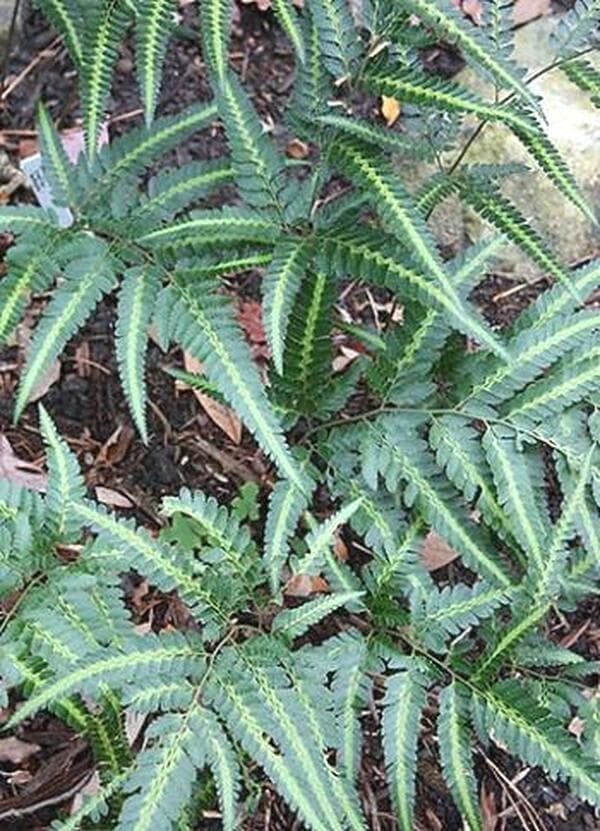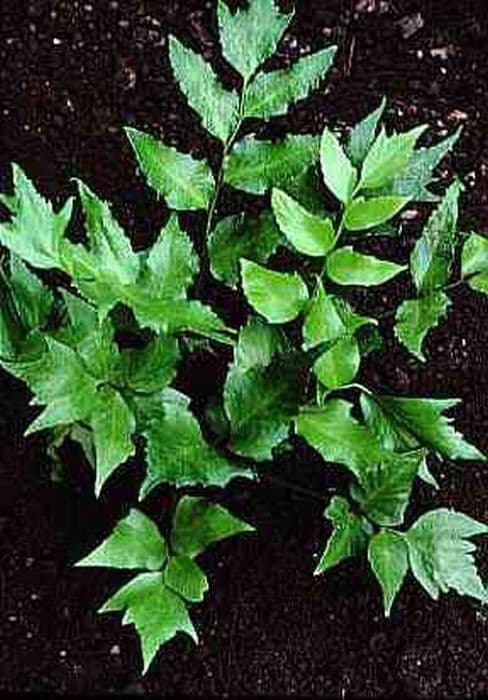Soft shield fern Polystichum setiferum (Divisilobum Group) 'Divisilobum Iveryanum'

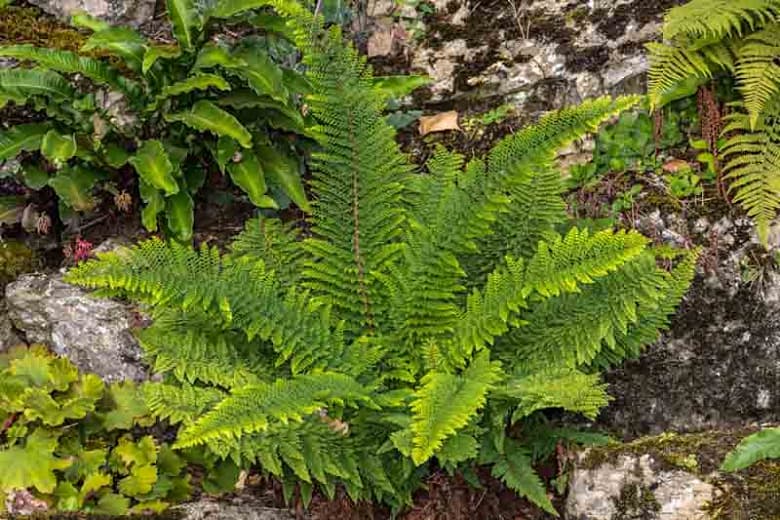
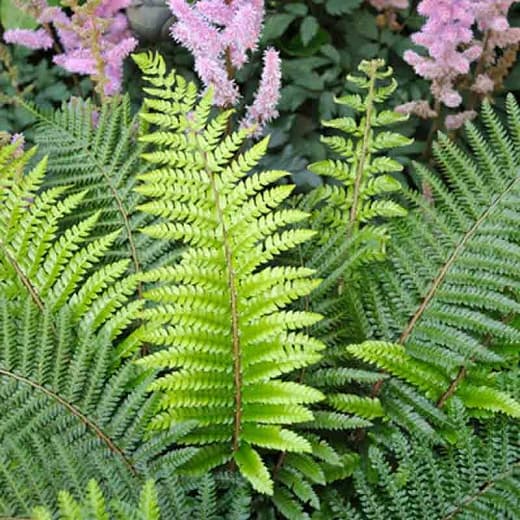

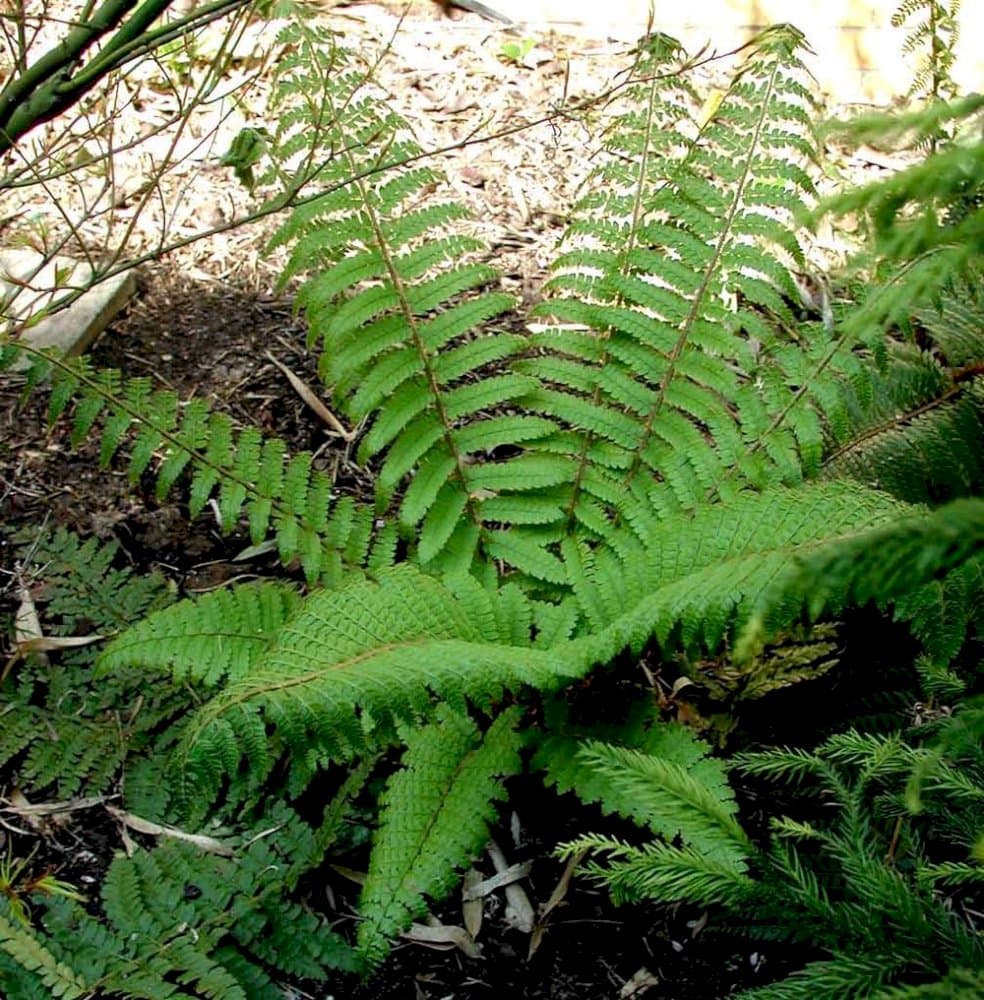

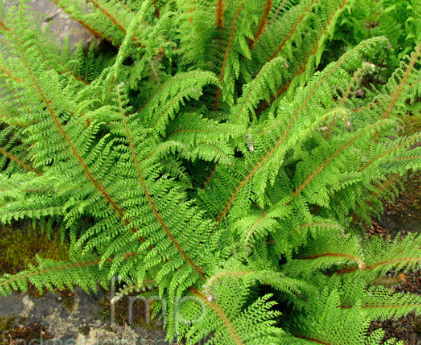
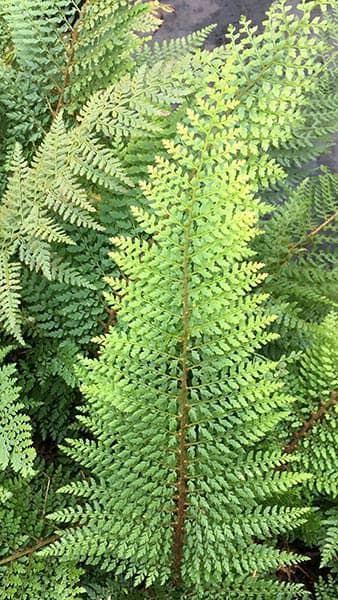
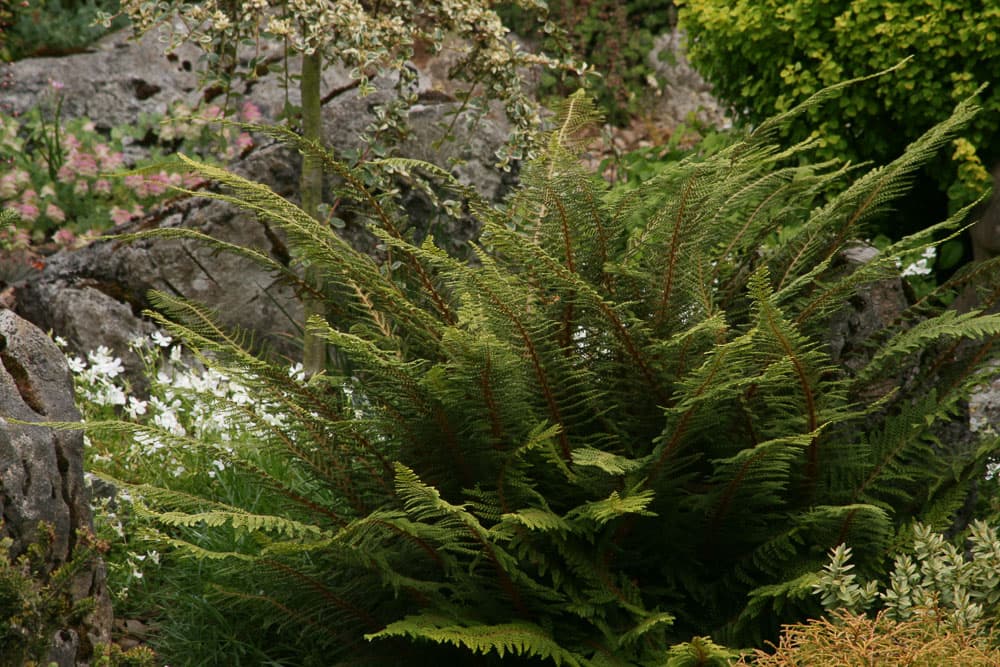

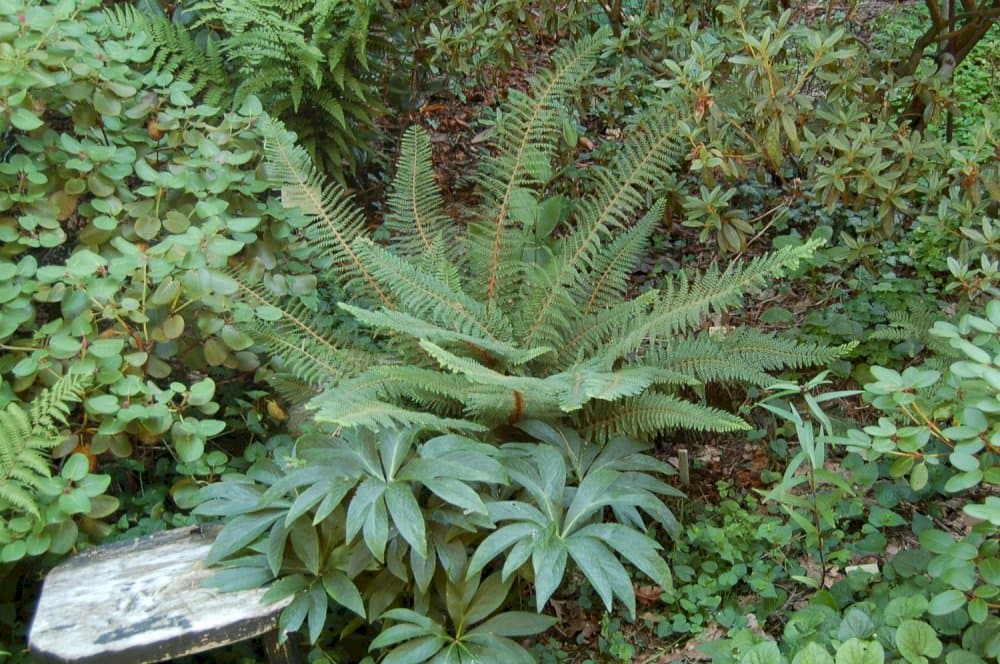
ABOUT
The Soft Shield Fern, more specifically the 'Divisilobum Iveryanum', is noted for its intricate and delicately-cut foliage. The fronds of this fern are lush and feathery, creating an appearance reminiscent of a deep green tapestry of leaves. The individual leaflets are finely divided, giving a soft and textured look that adds a gentle grace to where it grows. They emerge with a subtle fresh, green hue, which matures into a deeper, rich green over time. The plant's distinct fronds form a shuttlecock-like shape, contributing to a look that is both organized and natural. The appearance of the Soft Shield Fern invites touch, with leaflets exhibiting a gentle softness to the fingers. The plant expresses a natural elegance, making it an attractive addition to any shaded garden setting where its detail-oriented foliage can be fully appreciated.
About this plant
 Names
NamesFamily
Dryopteridaceae
Synonyms
Soft Shield Fern, Alaskan Fern
Common names
Polystichum setiferum 'Divisilobum', Aspidium setiferum (Forssk.) Willd. var. divisilobum, Dryopteris setifera (Forssk.) Woyn. var. divisilobum.
 Toxicity
ToxicityTo humans
Soft shield fern is generally not considered toxic to humans. There are no well-documented cases of poisoning or significant adverse effects from ingesting or handling this particular fern. However, as a general rule, it is always prudent to avoid ingesting plants that are not specifically intended for consumption to prevent any potential gastrointestinal discomfort or allergic reactions.
To pets
Soft shield fern is not known to be toxic to pets. Pets that ingest parts of this plant are unlikely to suffer from poisoning. However, individual animals can sometimes have unique sensitivities or allergic reactions to plants, so it is always a good idea to monitor your pet and consult with a veterinarian if you notice any unusual symptoms following ingestion.
 Characteristics
CharacteristicsLife cycle
Perennials
Foliage type
Evergreen
Color of leaves
Green
Height
3-4 feet (0.9-1.2 meters)
Spread
2-3 feet (0.6-0.9 meters)
Plant type
Fern
Hardiness zones
7
Native area
Europe
Benefits
 General Benefits
General Benefits- Aesthetic Appeal: Adds visual interest to shade gardens with its finely divided, ferny foliage.
- Low Maintenance: Requires minimal care once established, making it a convenient choice for gardeners of all levels.
- Wildlife Habitat: Provides shelter and habitat for various species of insects and small wildlife within a garden setting.
- Erosion Control: Helps to stabilize soil and prevent erosion in sloped or uneven areas of the landscape.
- Long-Lived: As a perennial, it offers a long-lasting presence in the garden, reducing the need for frequent replanting.
- Winter Interest: Maintains foliage throughout winter in mild climates, offering year-round garden interest.
- Drought Tolerance: Once established, it can be relatively drought-tolerant, requiring less frequent watering.
- Naturalizing: Can spread and create a lush, naturalistic undergrowth in woodland gardens or shady areas.
- Ground Cover: Forms a dense cover that can help suppress weeds and reduce garden maintenance.
- Versatility: Suitable for a variety of garden styles including formal, cottage, and naturalized gardens.
- Companion Planting: Works well with other shade-loving plants to create a textured and layered garden design.
 Medical Properties
Medical PropertiesThis plant is not used for medical purposes.
 Air-purifying Qualities
Air-purifying QualitiesThis plant is not specifically known for air purifying qualities.
 Other Uses
Other Uses- Artistic Inspiration: The intricate fronds of the Soft Shield Fern can inspire patterns and designs in various forms of art, including textile designs and architectural motifs.
- Educational Tool: The different parts of the Soft Shield Fern, such as fronds and spores, can be used in biological studies to teach students about fern life cycles and reproduction.
- Sound Absorption: The dense foliage of the Soft Shield Fern can be utilized in landscaping to absorb sound, making it a natural choice for creating a quieter, more serene garden space.
- Photography Prop: The unique texture and form of the Soft Shield Fern provide an interesting subject for photographers, especially for macro photography.
- Herbarium Specimens: Collecting and pressing the fronds of Soft Shield Fern can help create herbarium specimens for educational or archival purposes.
- Frost Indicator: The Soft Shield Fern can be used as a cold weather indicator, as the fronds will react to the first frosts, providing a visual clue to gardeners.
- Culinary Garnish: While not commonly consumed, the fronds can be used as an organic, ornamental garnish for plating high-end cuisine, due to their delicate appearance.
- Biodegradable Packaging Material: Dried fronds of the Soft Shield Fern might be used as a natural packaging material to protect fragile items, offering an eco-friendly alternative to synthetic materials.
- Nature-Inspired Jewelry: The intricate leaves of the Soft Shield Fern can be cast in metal or resin to create unique pieces of jewelry that reflect the delicate beauty of nature.
- Landscape Design Education: The growth pattern and compatibility with other plants make the Soft Shield Fern a useful plant in teaching principles of shade garden design.
Interesting Facts
 Feng Shui
Feng ShuiThe Soft Shield Fern is not used in Feng Shui practice.
 Zodiac Sign Compitability
Zodiac Sign CompitabilityThe Soft Shield Fern is not used in astrology practice.
 Plant Symbolism
Plant Symbolism- Endurance and Longevity: As a fern, Polystichum setiferum is a symbol of endurance and the ability to thrive in challenging conditions due to its hardy nature.
- Solitude and Privacy: Ferns often grow in quiet, shaded places, representing a love for solitude and a need for privacy.
- Sincerity: In Victorian floriography, ferns symbolized sincerity because of their unassuming appearance and the honest simplicity of their fronds.
- Fascination: Ferns, with their intricate fronds and patterns, can symbolize fascination, bewilderment, and complexity.
- Magic and Secret Bonding: Ferns have been associated with magic and the supernatural, as well as secret bonds of love and friendship, due to their hidden reproductive spores and lush, mysterious habitats.
 Water
WaterSoft Shield Fern should be watered thoroughly once the top inch of soil feels dry, which typically means watering approximately once a week, depending on the climate and indoor conditions. Use room temperature water, gently soaking the soil until water runs out of the drainage holes, ensuring deep hydration. On average, about half a gallon per watering session might be sufficient for a medium-sized plant, but always adjust based on the plant's needs and environmental factors. During the winter months, reduce watering frequency as the plant enters a dormancy period and its growth slows down.
 Light
LightThe Soft Shield Fern thrives best in indirect, dappled light conditions, making it suitable for a bright room where sunlight is filtered through a sheer curtain or placed in partial shade. Direct sunlight should be avoided as it can scorch the delicate fronds. The ideal spot would be north-facing or east-facing windowsills where it can receive gentle morning light and avoid the harsh afternoon sun.
 Temperature
TemperatureThe Soft Shield Fern prefers moderate temperatures, ideally between 60 and 75 degrees Fahrenheit. It can tolerate a minimum temperature of around 50 degrees Fahrenheit, so keep it away from cold drafts and windows during winter. The plant is not tolerant of extreme heat, so avoid placing it near heat sources or in very hot rooms that exceed 80 degrees Fahrenheit.
 Pruning
PruningPruning the Soft Shield Fern is necessary to remove any dead or yellowing fronds, which promotes healthier growth and a tidier appearance. It's best to prune in the spring before the new growth starts, cutting back any old fronds to the base of the plant. This fern does not require frequent pruning; attending to it once per year or as needed to tidy old growth is sufficient.
 Cleaning
CleaningAs needed
 Soil
SoilSoft Shield Fern thrives best in a well-draining, loamy soil with high organic matter. Ideal soil pH for this fern is slightly acidic to neutral, ranging from 6.0 to 7.0. Mix equal parts of garden soil, compost, and perlite or coarse sand to create the perfect soil blend for 'Divisilobum Iveryanum'.
 Repotting
RepottingSoft Shield Fern should be repotted every 2 to 3 years or when it outgrows its current container. Repotting is best done in the spring before the growing season commences. This schedule ensures that 'Divisilobum Iveryanum' has space to grow and fresh soil to support its development.
 Humidity & Misting
Humidity & MistingSoft Shield Fern prefers a humid environment, with best growth seen when humidity levels are maintained between 50% and 70%. If the indoor air is too dry, consider using a humidifier or placing a water tray near the plant to increase the ambient humidity for 'Divisilobum Iveryanum'.
 Suitable locations
Suitable locationsIndoor
Place in a well-lit room away from direct sun.
Outdoor
Plant in a shaded, moist location with good drainage.
Hardiness zone
5-8 USDA
 Life cycle
Life cyclePolystichum setiferum (Divisilobum Group) 'Divisilobum Iveryanum', commonly known as Soft Shield Fern, begins its life cycle as spores which are produced beneath the fronds and released when mature. These spores germinate in moist conditions to develop into a heart-shaped gametophyte, which is the sexual stage of the plant. The gametophytes produce both male and female gametes that, with the presence of water, combine during fertilization to give rise to a new sporophyte, the typical fern plant. The sporophyte grows from a small, initial shoot and root into a mature fern with a rhizome and multiple fronds. As it matures, the fern expands through the division of the rhizome and the unfurling of curled fronds known as fiddleheads. The Soft Shield Fern can reproduce vegetatively through rhizome division as well, leading to new genetically identical plants that contribute to the fern’s persistence and spread in suitable habitats.
 Propogation
PropogationPropogation time
Spring to early summer
Propogation: The most popular method of propagating Polystichum setiferum (Divisilobum Group) 'Divisilobum Iveryanum', commonly known as Soft Shield Fern, is through spore collection and sowing. Typically, the best time to collect spores is during the summer months when the spore cases on the underside of the fronds ripen and turn brown. The process involves carefully cutting a mature frond and placing it inside a paper bag to dry. Once dried, the fronds can be shaken, and the spores fall out. These can then be sown on the surface of a sterilized compost mix kept moist and out of direct sunlight in a temperature range of 68 to 72 degrees Fahrenheit (20 to 22 degrees Celsius). The process requires patience as it may take a few weeks to several months for the spores to germinate and grow into new fern plants.
